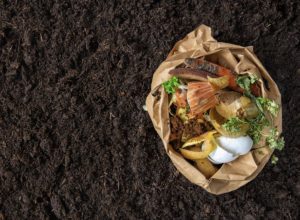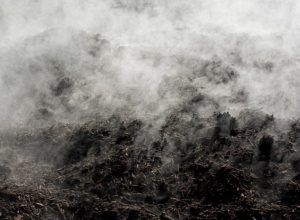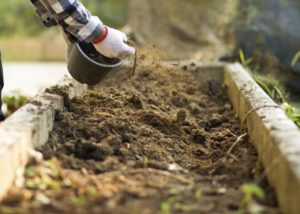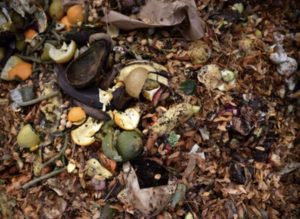Composting is a natural and sustainable way to reduce waste and create nutrient-rich soil for your plants. It’s a simple process that can be done in your backyard with minimal equipment and effort. However, if you’re new to composting, it can seem overwhelming. This blog post will cover the basics of composting and provide beginners with tips on getting started.
If you’re interested in composting but need more time or resources to do it yourself, consider working with a professional landscaping company like IslandEarth Landscape Company. They offer various sustainable landscaping services, including composting, to help create a beautiful and eco-friendly outdoor space. Their team of experts can guide composting methods and help you set up and maintain a composting system that meets your specific needs. By working with a company like IslandEarth, you can enjoy the benefits of composting without the hassle of doing it yourself.
What is composting?
Composting is the process of breaking down organic materials into a nutrient-rich soil amendment that can be used to improve soil quality and plant growth. This process is done by microorganisms, such as bacteria and fungi, that decompose organic matter into compost. The resulting compost is rich in nutrients, including nitrogen, phosphorus, and potassium, which are essential for plant growth.

Composting Methods
Several composting methods include hot composting, cold composting, and worm composting. Each method has its benefits and drawbacks, and your chosen method will depend on your preferences, available space, and the materials you have to compost.

1. Hot Composting
Hot composting is the fastest method of composting, and it involves creating a pile of organic matter that heats up to high temperatures. The heat speeds up the decomposition process, and the resulting compost is ready in a matter of weeks.
To start a hot compost pile, you’ll need to gather a mix of “green” and “brown” materials. Green materials include fresh grass clippings, kitchen scraps, and other nitrogen-rich materials, while brown materials include dried leaves, straw, and other carbon-rich materials. The ideal ratio of green to brown materials is 1:2.
Once you have your materials, start by creating a base layer of brown materials at the bottom of your compost bin or pile. Then add a layer of green materials on top, followed by another layer of brown materials. Continue layering your materials until your pile is at least three feet high.
To get your pile to heat up, you’ll need to ensure that it stays moist and that it has plenty of oxygen. You can turn your pile regularly and add water as needed. Within a few weeks, your compost should be ready to use.

2. Cold Composting
Cold composting is a slower method of composting that requires little effort. Instead of creating a pile that heats up, you add your organic materials to a compost bin or pile and let nature do the work.
To start a cold compost pile, add your organic materials to your compost bin or pile. Be sure to mix in some brown materials to ensure that your pile balances nitrogen and carbon.
Unlike hot composting, you don’t need to turn your pile regularly or monitor its temperature. However, it can take several months to a year for your compost to be ready.

3. Worm Composting
Worm composting, also known as vermicomposting, involves using worms to break down organic matter. This method is ideal for those with limited space, as worm composting can be done in a small container indoors or outdoors.
To start a worm composting bin, you’ll need a container with a lid, such as a plastic storage bin or a wooden box. Drill several small holes in the sides of the container to allow for ventilation.
Next, add a layer of moist bedding material to the bottom of your container. This can be shredded newspaper, leaves, or other non-toxic materials. Then add your food scraps on top, being careful not to overfeed your worms.
Finally, add your worms to the container and cover them with a lid. Be sure to keep your worm bin in a cool, dark place and keep it moist by adding water as needed. Within a few months, your worms will have turned their organic matter into nutrient-rich worm castings for soil amendment.

Tips for Successful Composting
No matter which method of composting you choose, there are a few tips that can help ensure success:
- Start small: If you’re new to composting, start with a small bin or pile. This will make it easier to manage and less overwhelming.
- Choose the right location: Composting should be done in a well-drained area with good air circulation. Avoid composting near your house or in an area with strong odours.
- Balance your materials: The key to successful composting is to have the right balance of green and brown materials. Aim for a 1:2 ratio of green to brown materials.
- Keep it moist: Your compost pile should be moist but not waterlogged. Add water as needed to keep your pile moist.
- Turn your pile: Turning your compost pile regularly will help aerate it and speed up the decomposition process. If you’re using a worm composting bin, gently mix the contents once a week.
- Avoid adding meat and dairy: Meat and dairy products can attract pests and slow down the composting process. Stick to fruit and vegetable scraps, leaves, and other non-meat items.
- Use your compost: Once your compost is ready, use it as a soil amendment for your garden or potted plants. It can also be used as a top dressing or mulch.
Composting is an easy and sustainable way to reduce waste and improve soil quality. You can create nutrient-rich compost for your garden or plants with a little effort and suitable materials. Whether you choose hot, cold, or worm composting, follow these tips for success and enjoy the benefits of composting.